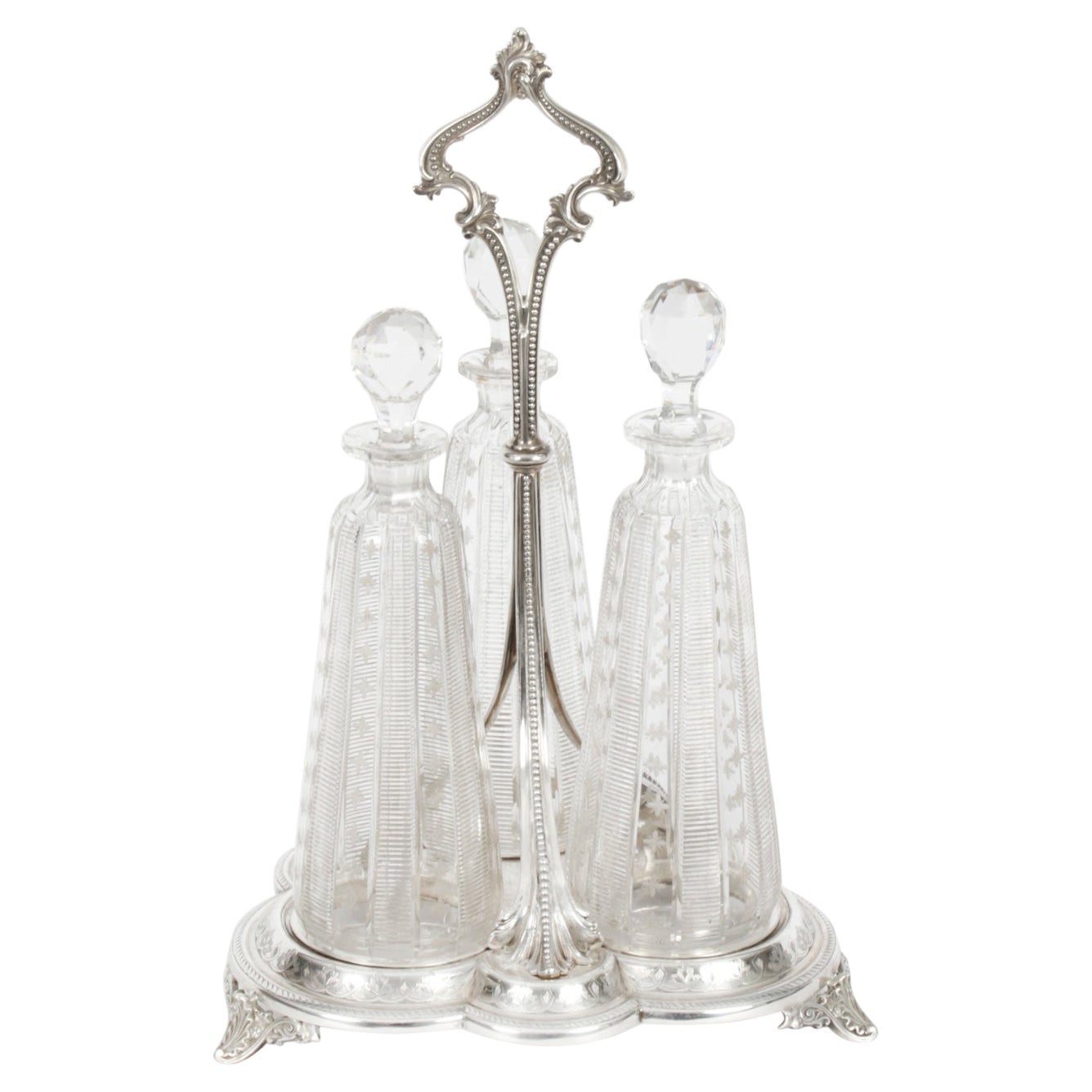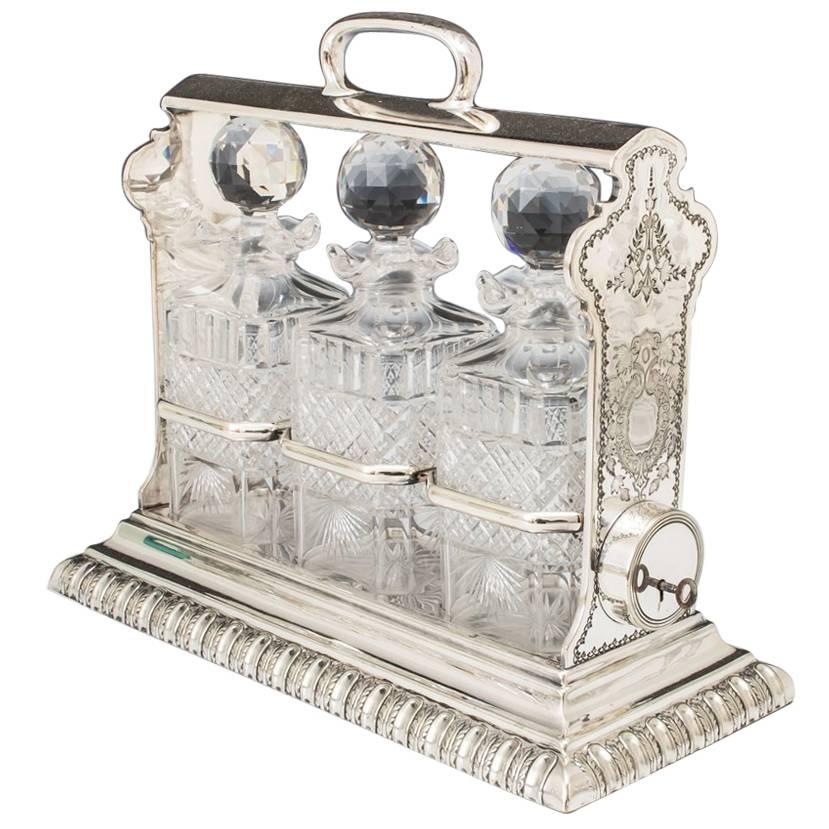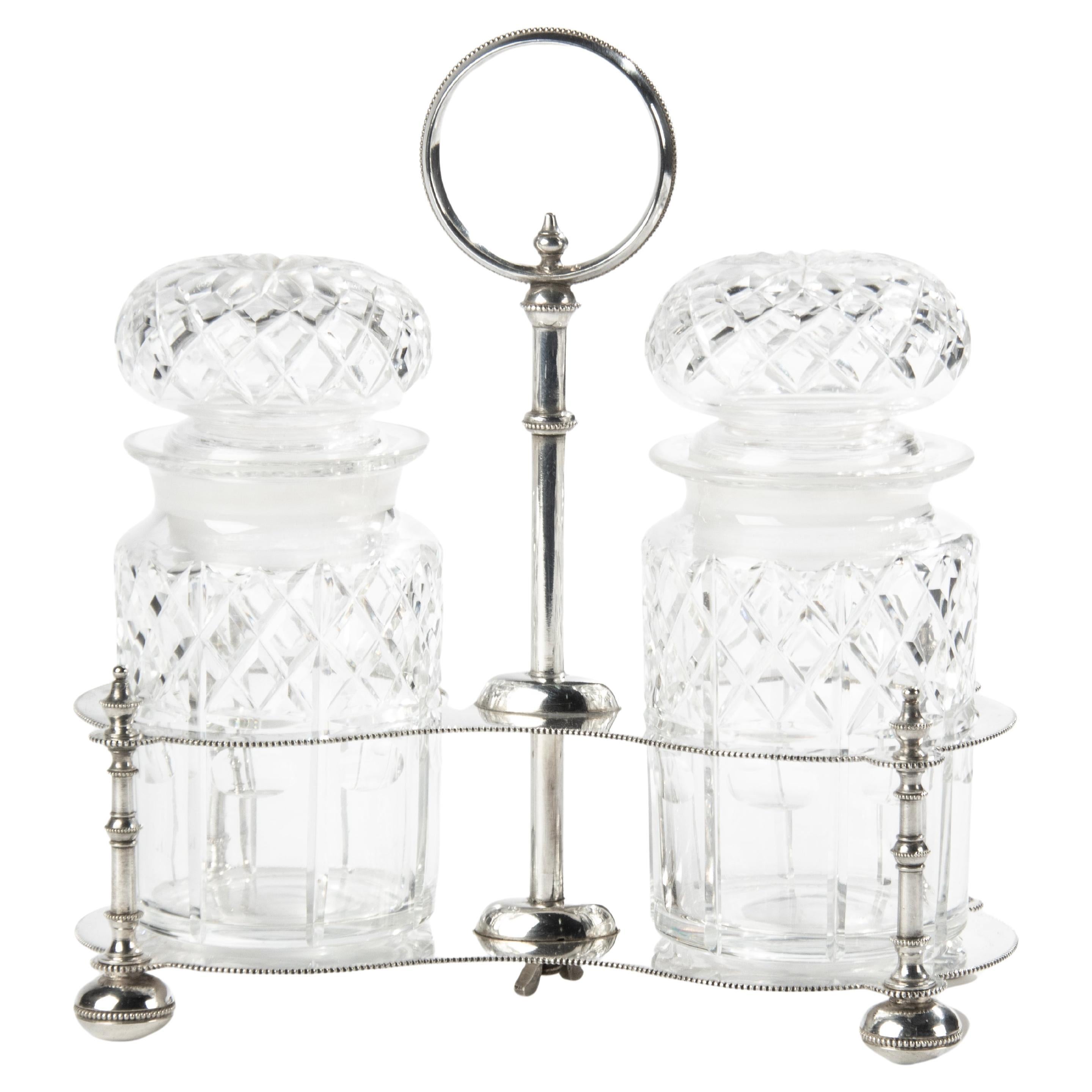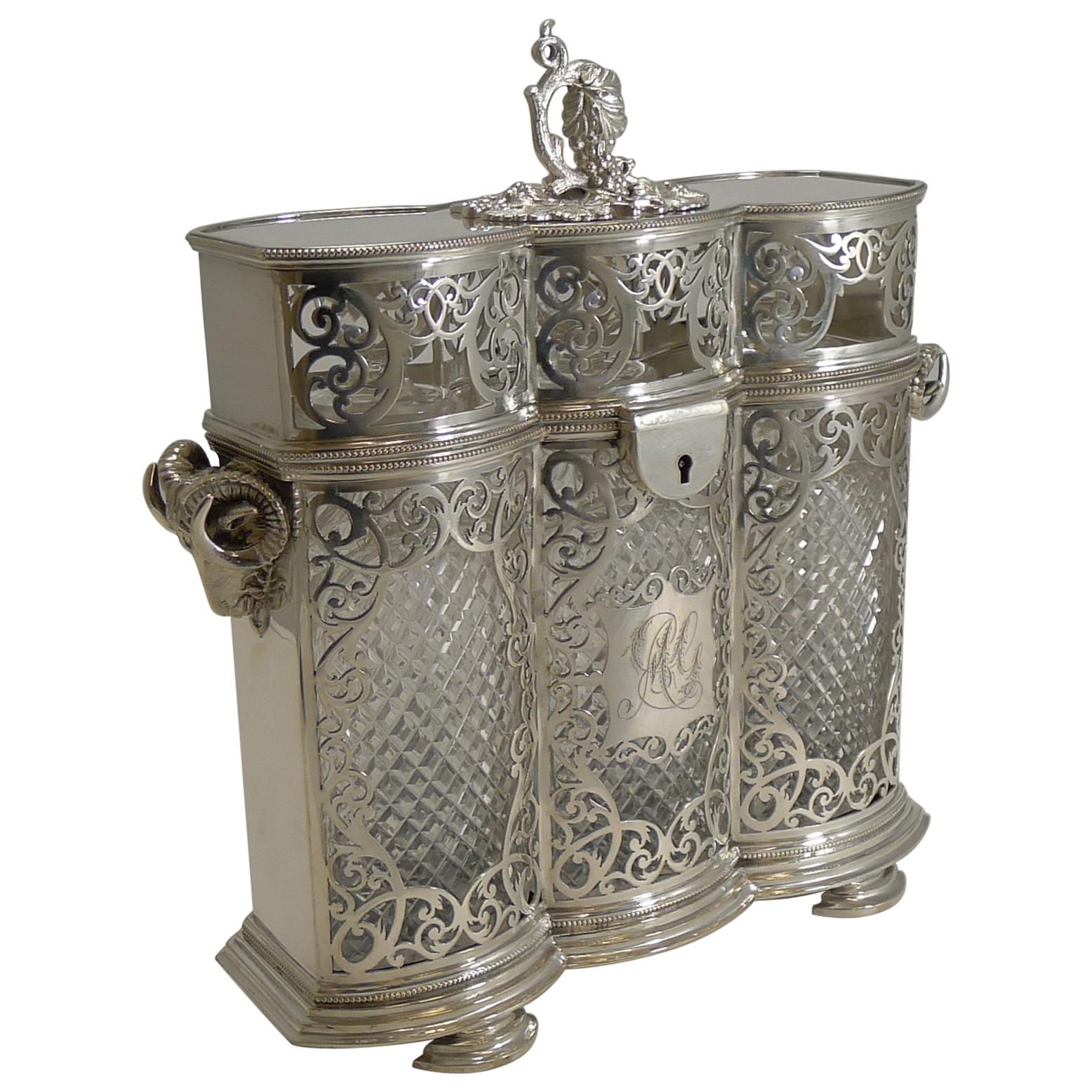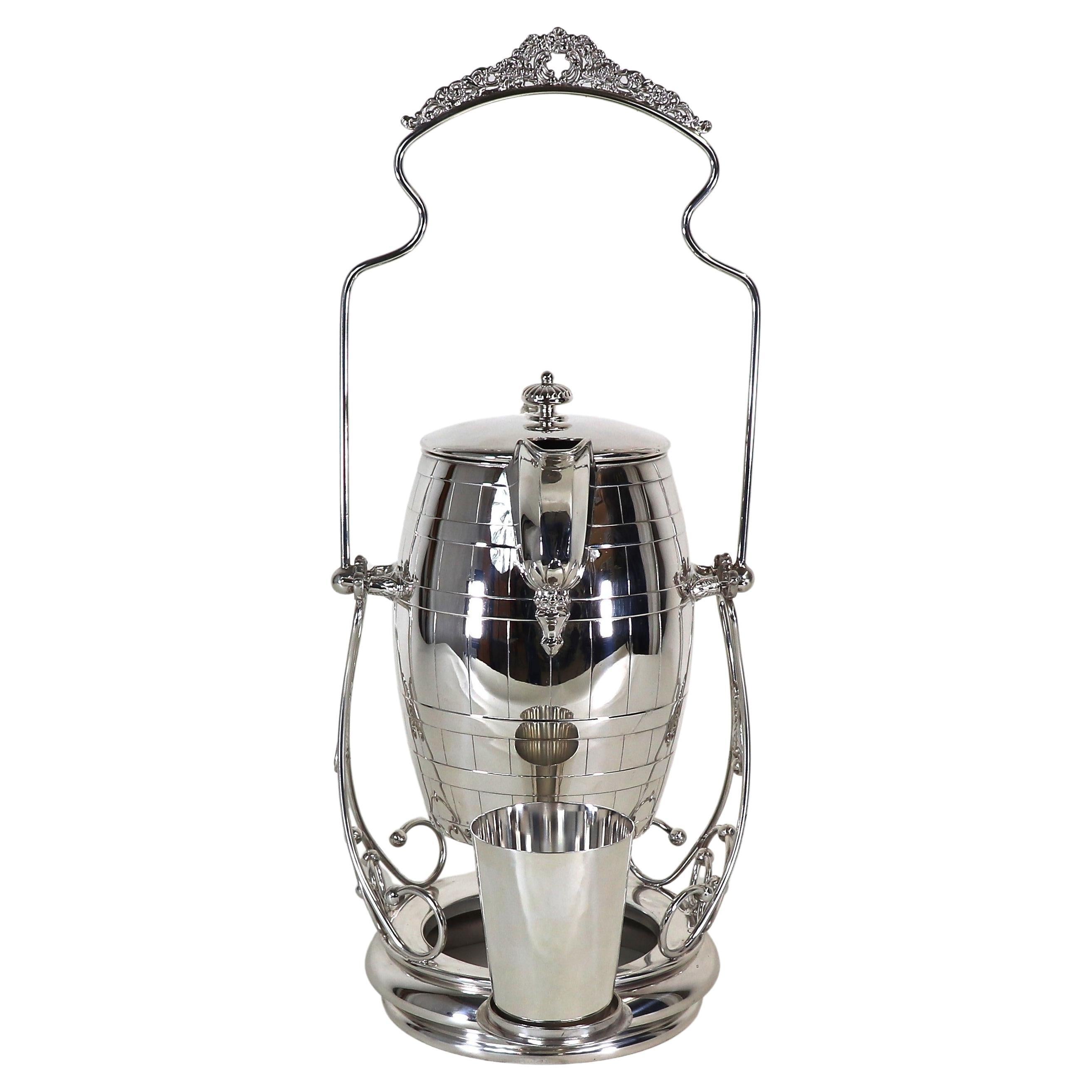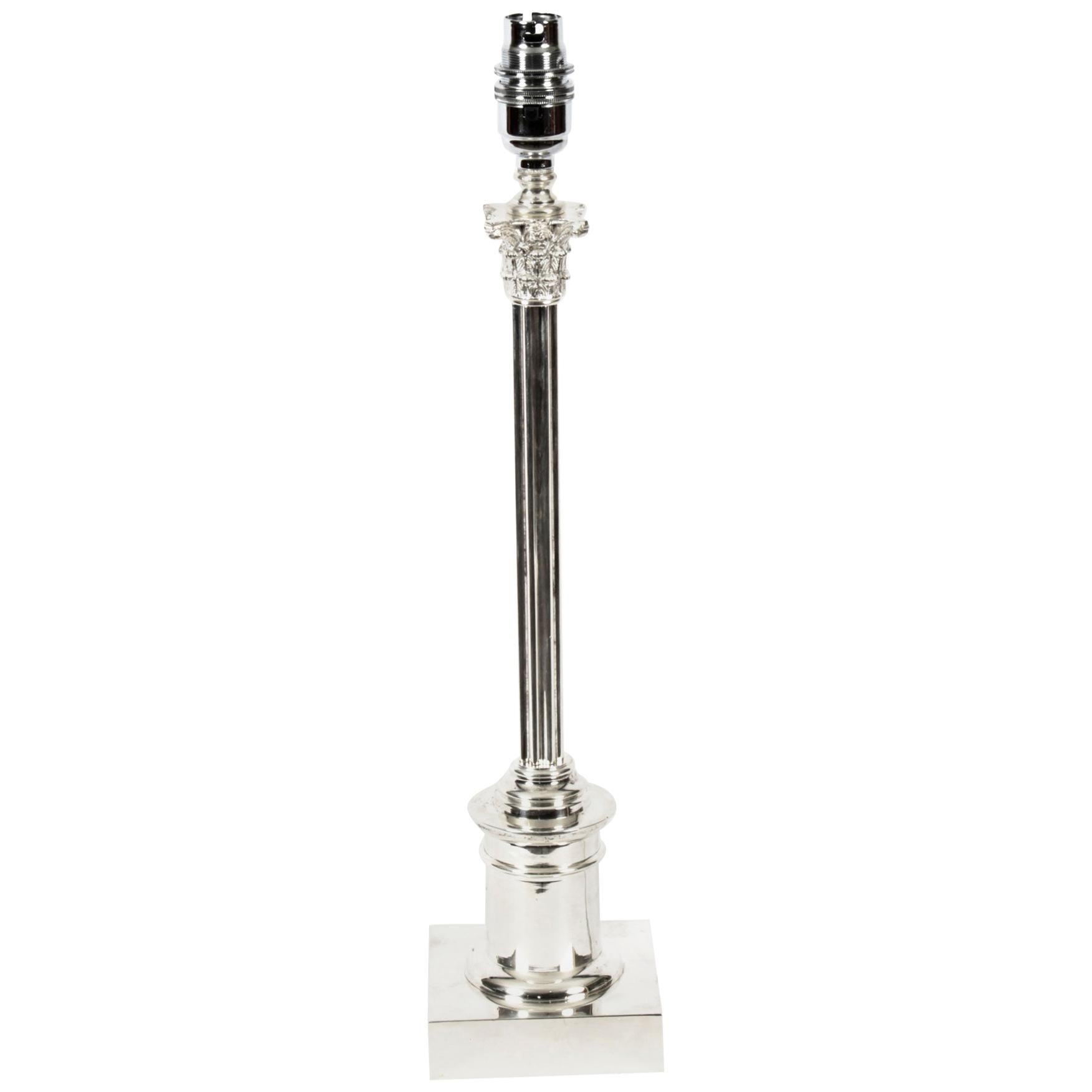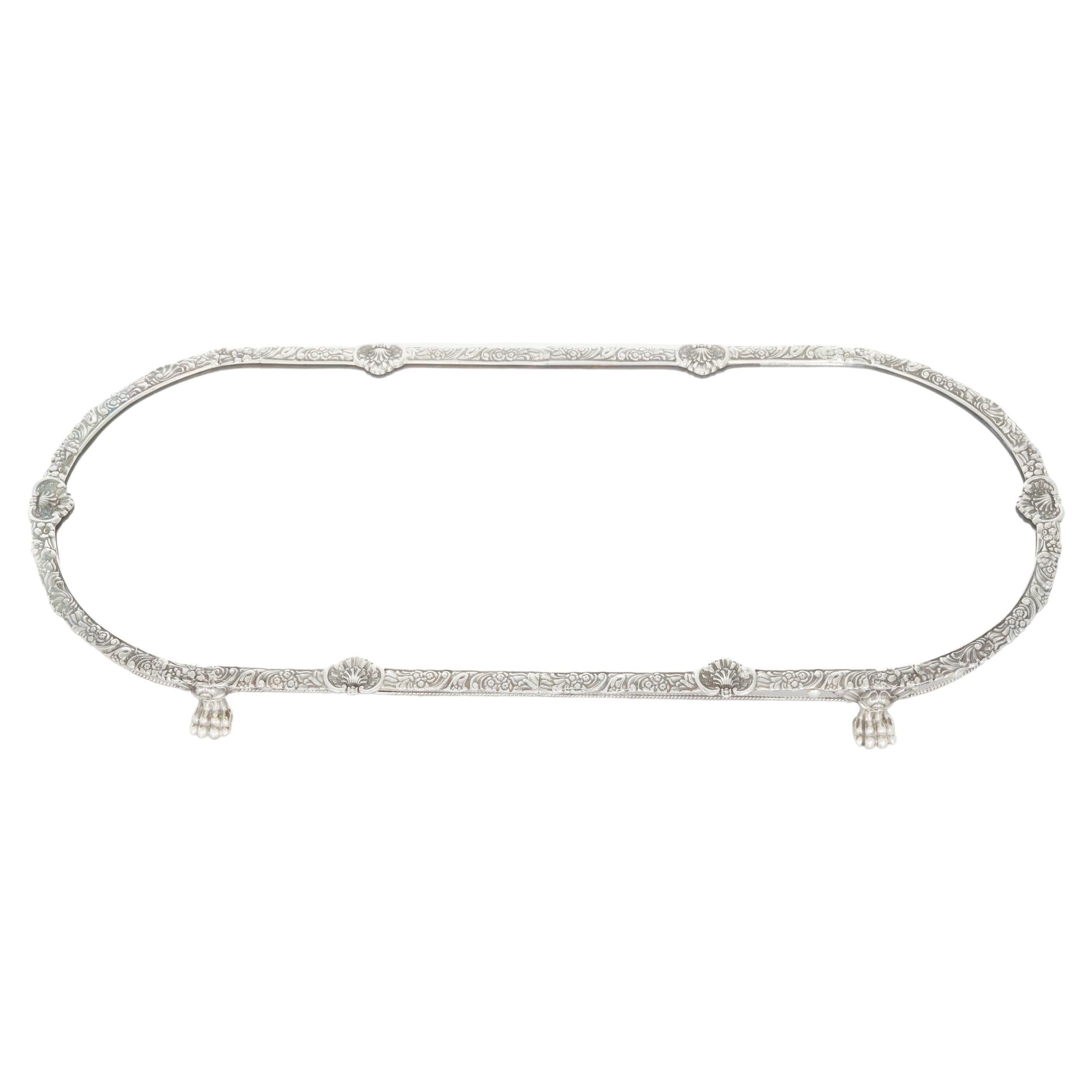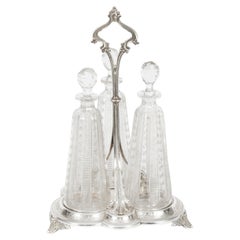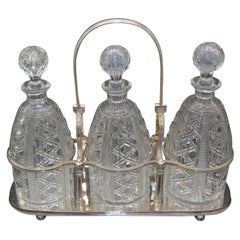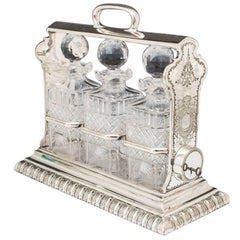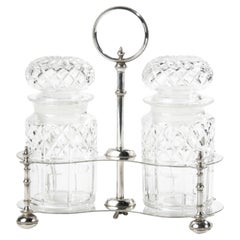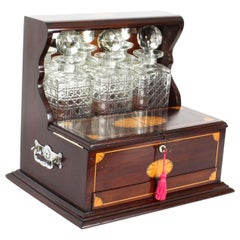
Antique Inlaid Flame Mahogany Three Crystal Decanter Tantalus Early 20th Century
View Similar Items
Video Loading
Want more images or videos?
Request additional images or videos from the seller
1 of 22
Antique Inlaid Flame Mahogany Three Crystal Decanter Tantalus Early 20th Century
About the Item
- Dimensions:Height: 13.39 in (34 cm)Width: 14.97 in (38 cm)Length: 13.39 in (34 cm)
- Style:Victorian (Of the Period)
- Materials and Techniques:
- Place of Origin:
- Period:1900-1909
- Date of Manufacture:circa 1900
- Condition:
- Seller Location:London, GB
- Reference Number:Seller: A12781stDibs: LU950620095982
About the Seller
5.0
Platinum Seller
These expertly vetted sellers are 1stDibs' most experienced sellers and are rated highest by our customers.
Established in 1983
1stDibs seller since 2012
1,199 sales on 1stDibs
Associations
LAPADA - The Association of Arts & Antiques Dealers
More From This SellerView All
- Antique Victorian Silver Plated Triple Decanter Tantalus Stand 19th CLocated in London, GBThis is a lovely attractive antique Victorian silver plated tantalus with three cut glass decanters and stoppers, circa 1860 in date. The three cut glass decanters are of unusual in shape and feature superb facet cut linear decoration with facet cut stoppers. The silver plated decanter holder has a central stem with a loop handle and the three decanters sit in circular wells. It is raised on three pierced scrolled supports and has exquisite engraved decoration in the manner of Elkington. The craftsmanship is second to none and this beautiful tantalus is sure to add an elegant touch to your next dining experience. Condition: In excellent condition, please see photos for confirmation of condition. Dimensions in cm: Height 41 x width 27 x depth 27 Dimensions in inches: Height 1 foot, 4 inches x width 11 inches x depth 11 inches Tantalus is a type of liquor decanter in which the bottle stoppers are locked down tightly by a metal bar. This was to prevent the theft of the contents by servants. Like the name suggests, the decanters themselves are visible, drawing temptation while unattainable. A key is required for entry. The most common types of tantalus holds three bottles or decanters while there are also smaller types housing only two. There are many different forms of tantalus. Often the encasement has metal handles on both sides and ornately carved decor. Crystal and metal versions are also a beautiful option when choosing a tantalus. Tantalus derived its name from the story of the mythological Greek king...Category
Antique 1860s English Victorian Sheffield and Silverplate
MaterialsSilver Plate
- Antique Edwardian Silver Plated Corinthian Column Table Lamp, Early 20th CenturyLocated in London, GBThis is an impressive antique Edwardian silver plated Corinthian column table lamp, circa 1910 in date. It features a classic Corinthian Capital decorated with acanthus leaves and anthemion with a thin cylindrical fluted shaft on a circular pedistal raised on a square stepped base. Add an element of pure luxury to your home with this antique silver plated table lamp. Condition: In excellent working condition having been beautifully cleaned and rewired, please see photos for confirmation. Dimensions in cm: Height 43 x width 10 x depth 10 Dimensions in inches: Height 16.9 x width 3.9 x depth 3.9 Corinthian capital It has been suggested that the foliage of the Greek Corinthian capital was based on the Acanthus spinosus, that of the Roman on the Acanthus mollis. The leaves are generally carved in two "ranks" or bands, like one leafy cup set within another. One of the most beautiful Corinthian capitals is that from the Tholos of Epidaurus (400 BC); it illustrates the transition between the earlier Greek capital...Category
Vintage 1910s English Edwardian Sheffield and Silverplate
MaterialsSilver Plate
- Antique WMF Silver Plated Sweets / Visiting Card / Key/ Tray Early 20th CenturyLocated in London, GBThis is a beautiful WMF Art Nouveau silver plated visiting card tray Circa 1900 in date. Depicting a female figure in a long, flowing diaphanous dress, the train forming the double sided tray, with the impressed maker's mark and stamped '169' to underside. This exquisite casket could house anything from trinkets, keys, sweets to jewellery. Whatever you choose to use this item for you are sure to do it in style. Condition: In excellent condition with no dings, dents or signs of repair. Please see photos for confirmation. Dimensions in cm: Height 22 x Width 34.5 x Depth 16.5 Dimensions in inches: Height 9 inches x Width 1 foot, 2 inches x Depth 6 inches WMF In 1853, Daniel Straub, a miller from Geislingen, joined forces with the Schweizer Brothers to form the "Metallwarenfabrik Straub & Schweizer" in Geislingen. This was the second company to be founded by Straub - previously in 1850, from the nucleus of a small repair workshop, which he had set up to work on the construction of Geislingen's famous railway incline, he had founded Maschinenfabrik Geislingen. This company was involved mainly in manufacturing mill turbines and traded throughout Europe. As early as 1862, the young company distinguished itself by winning a gold medal at the World Exhibition in London. In 1866, following the departure of the brothers Louis and Friedrich Schweizer, the company was renamed Straub & Sohn" (Straub & Son). The company showroom, built in 1868 in Berlin, gradually evolved to become the company's first retail outlet. Three years later, the company was already employing 60 workers. By 1880, the number of employees had grown to approximately 200 and the company was already producing 960 different items. 1880 saw the merger between Straub & Sohn and "Ritter & Co.", Esslingen, to form a public limited company under the name of Wurttembergische Metallwarenfabrik. At the time of the merger, Ritter & Co.'s Esslingen factory was already using the electroplating method of silver plating and had the more modern production facilities at its disposal. Straub's company, on the other hand, was the more profitable of the two. 1892 saw the development of a special technique for silver plating cutlery, whereby the silver is distributed in a way that, at the points of the cutlery most exposed to wear and tear, the coating is twice as thick as elsewhere. This process was patented and is still in use today. Known nowadays as 'Perfect Hard Silver plating' the technique remains exclusive to WMF. Under Carl Hugele the company gained international standing. At the turn of the century the factory in Geislingen employed 3,000 workers. By 1910, this number had already grown to 4,000, making WMF the largest company in Wurttemberg at this time. Sales catalogues were printed in twelve languages. Subsidiary companies in London, Warsaw and Vienna opened up export markets. Under the direction of Albert Mayer the WMF studio was influenced by the art nouveau style. The product range was modernized and considerably extended. In 1905 WMF acquired a majority holding of the Cologne company Orivit AG, which manufactured products from "Orivit", a tin alloy. As of 1925, products created by the Contemporary Decorative Products Department (NKA) made their debut on the market. This department was set up under the direction of Hugo Debach in order to establish the name of WMF amongst consumers interested in art and design. This department was responsible for producing the special "Ikora" finish, which has earned an important place in the annals of art history. The "Ikora" brand name referred to a specific method of treating the surface of the metal, by which layers of coating were applied in a partly chemical and partly heat induced process. A host of newly developed hand-finishing techniques enhanced the possibilities for adding decorative flourishes to the products. Despite being mass produced, every item looked as if it had been individually crafted. At the end of the war the company had lost its foreign assets, associated factories...Category
Antique Early 1900s German Art Nouveau Sheffield and Silverplate
MaterialsSilver Plate
- Antique Oak Silver plated Three Oak Barrel Decanters on Stand 19th CenturyLocated in London, GBThis is an elegant antique solid oak and silver plated three-barrel decanter set, circa 1880 in date. The oak trestle stand is formed as three coopered oak barrels with silver pla...Category
Antique 1880s Sheffield and Silverplate
MaterialsSilver Plate
- Antique Coromandel Three Crystal Decanter Tantalus & Games Drawer 19th CLocated in London, GBThis is a superb antique Victorian coromandel, brass mounted and cased three decanter tantalus and games compendium, Circa 1880 in date. It was skillfully crafted in rare coromandel with cut brass mounts, three cut crystal glass decanters with stoppers, a mirrored back and a twin lidded compartment with a Bramah lock, opening to reveal a compartment containing five glasses. There is a secret base drawer with playing cards, cribbage board, dice and chips. It can be opened by pressing the disguised brass button which is just in front of the central decanter. It is a decorative piece which is also very practical, and would make a lovely gift. It is complete with the original working Bramah lock and key, which locks everything. Condition: In excellent condition having been beautifully cleaned polished and waxed in our workshops, please see photos for confirmation. Dimensions in cm: Height 33 cm x Width 38 cm x Depth 11 cm Dimensions in inches: Height 1 foot, 1 inch x Width 1 foot, 3 inches x Depth 4 inches Coromandel wood or Calamander wood is a valuable wood from India, Sri Lanka and South East Asia. It is of a hazel-brown color, with black stripes (or the other way about), very heavy and hard. It is also known as Macassar Ebony or variegated ebony and is closely related to genuine ebony, but is obtained from different species in the same genus; one of these is Diospyros quaesita Thwaites, from Sri Lanka. The name Calamander comes from the local sinhalese name, 'kalu-medhiriya', which means dark chamber; referring to the characteristic ebony black wood. Coromandel wood has been logged to extinction over the last 2 to 3 hundred years and is no longer available for new work in any quantity. Furniture in coromandel is so expensive and so well looked after that even recycling it is an unlikely source. A substitute, Macassar Ebony, has similar characteristics and to the untrained eye is nearly the same but it lacks the depth of colour seen in genuine Coromandel. Bramah is London's oldest security company. Established at 124 Piccadilly, London in 1784, and today based in Marylebone, London and Romford, Essex. Bramah made their first lock in 1784 and the patent was awarded in 1787. The designer was Joseph Bramah. Joseph Bramah was a leading inventor of the industrial revolution, patenting over 18 new ideas, including a new valve for the water closet (toilet), the hydraulic pump, a fountain pen, and a fire engine. Bramah also introduced a beer hand pump for use at the bar, to prevent fluid loss when barmen went downstairs to pour a new jug! Due to the quality of his manufacturing, his name became a by-word amongst British Engineers for engineering excellence and many of his inventions are on display in the Science Museum in London. You can find one of his original toilets still working in Osborne House, Queen Victoria's home on the Isle of Wight. The Bramah lock was unique and advanced property and valuables protection enormously. Indeed it was 50 years ahead of any Chubb lock...Category
Antique 1880s Late Victorian Crystal Serveware
MaterialsBrass
- Early 20th Century Edwardian Inlaid Mahogany BookstandLocated in London, GBThis is an elegant Edwardian bookstand, circa 1900, made from mahogany with fan inlaid decoration and boxwood stringing. Perfect for keeping your ...Category
Antique Early 1900s English Edwardian Side Tables
MaterialsBoxwood, Mahogany
You May Also Like
- English 19th Century Cut Glass and Silver Plate Three Decanter TantalusLocated in Wells, MEEnglish 19th century silver plate hand engraved, footed tantalus by Edwin Blyde and Company with three fine deeply cut glass large decanters with origin...Category
Antique 1870s English Victorian Sheffield and Silverplate
MaterialsSilver Plate
- Silver Plate Victorian Decanter TantalusLocated in Steyning, West sussexA fine silver plate decanter tantalus with fine englaveing on both sides holding three elaborately cut decanters with most unusual four pour necks.Category
Antique 1870s Victorian Crystal Serveware
- Early 20th Century Old Sheffield Plate and Crystal Serving PieceLocated in Casteren, Noord-BrabantBeautiful silver plated server for pickles or jam. The stand is made of Sheffield plate, with markings on the bottom. The crystal pots are beautifully deco...Category
Antique Early 1900s British Victorian Sheffield and Silverplate
MaterialsCrystal, Silver Plate
- Victorian Silver Tantalus Set with Three Cut Glass Decanters and StoppersBy Harrison Brothers & George Howson 1Located in New York, NYA Late Victorian Silver Tantalus with Three Cut Glass Decanters and Stoppers. The tantalus is marked Sheffield, 1896, Probably HARRISON BROTHERS & HOWSON...Category
Antique Late 19th Century English Late Victorian Sheffield and Silverplate
MaterialsSheffield Plate
- Heirloom Quality Three Bottle Decanter Box or Tantalus by Philip AshberryBy Philip Ashbery & SonsLocated in Bath, GBA truly magnificent three bottle decanter case made from silver plate and fully marked for the Sheffield silversmith's, Philip Ashberry & Sons, dating ...Category
Antique 1870s English Late Victorian Barware
- Ellis Barker, Antique Silver Plate Candlestick, England, Early 20th CenturyBy Ellis BarkerLocated in Chatham, ONEllis Barker Silver Co. - antique single silver-plate candlestick - large size - finely chased - weighted base - menorah hallmark / stamp to the base rim ...Category
Early 20th Century British Victorian Candlesticks
MaterialsSilver Plate
Recently Viewed
View AllMore Ways To Browse
Antique Metal Fire Engine
Essex Crystal Silver
Sheffield Liquor
Yale Locks Antique
Antique Pump Fountain
Antique Wooden Toilets
Sheffield Tantalus
Antique Water Pump Fountain
Silverplate Tantalus
British Crystal Decanters
Hand Water Pump
Fountain Pen Stand
Mahogany Decanter Case
Antique Essex Crystal
Fire Greek Key
Mahogany Closet
Ercuis Silverplate Flatware
Real Silver Silverware Sets

